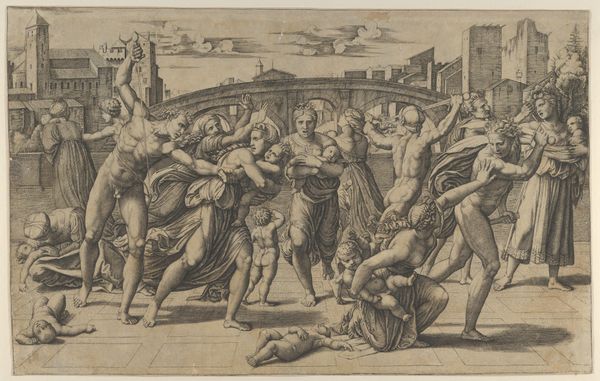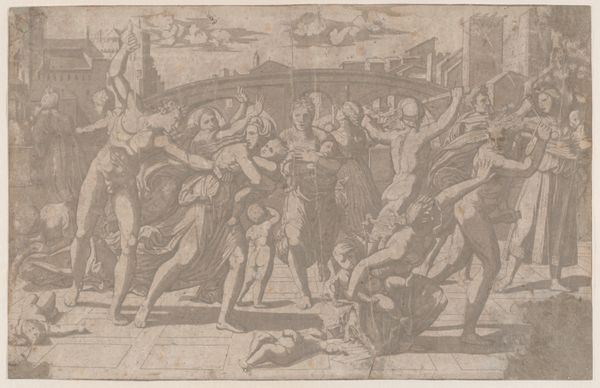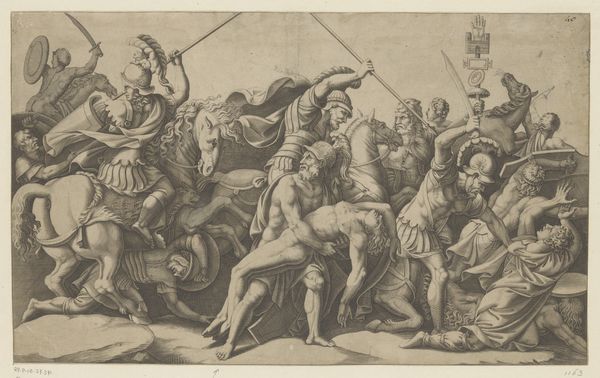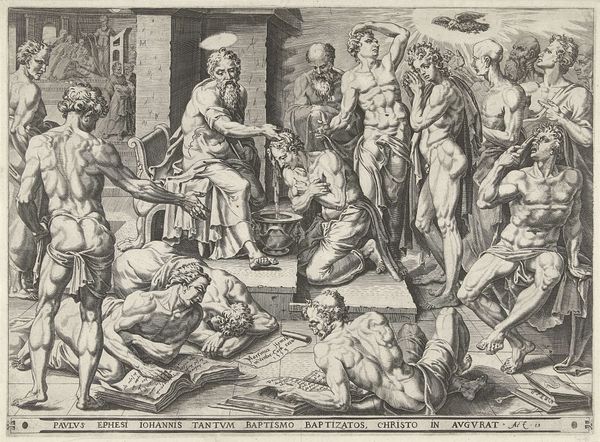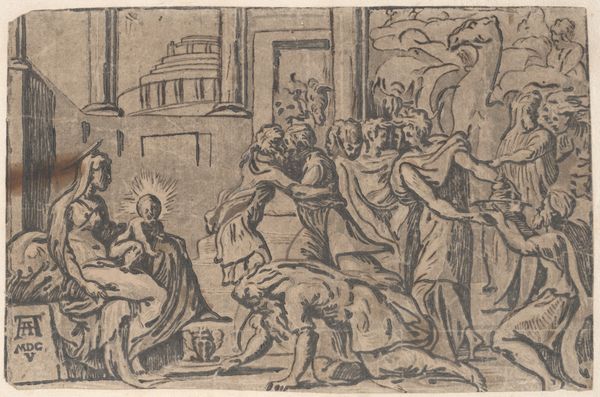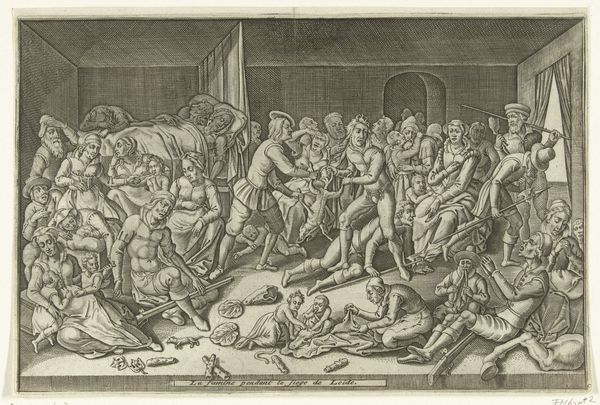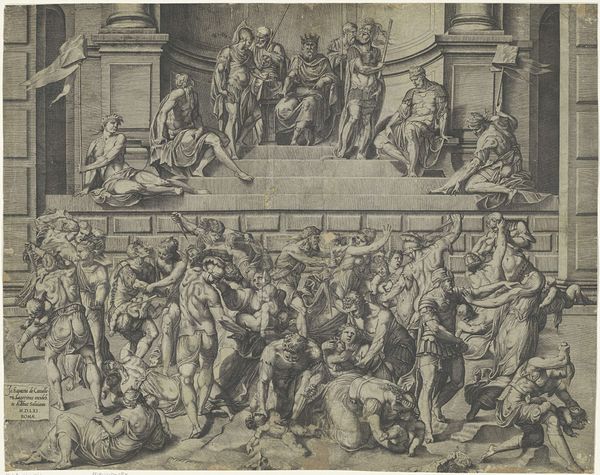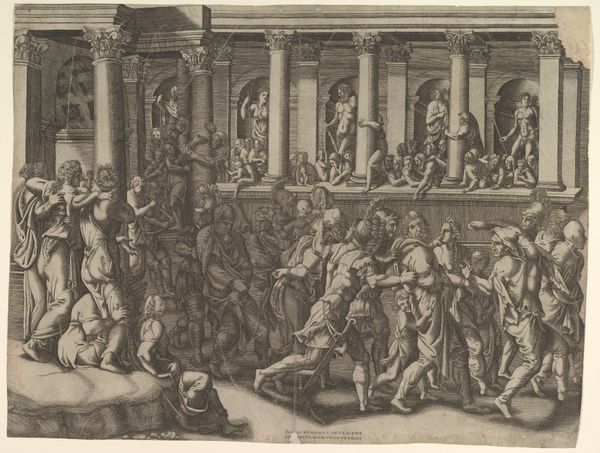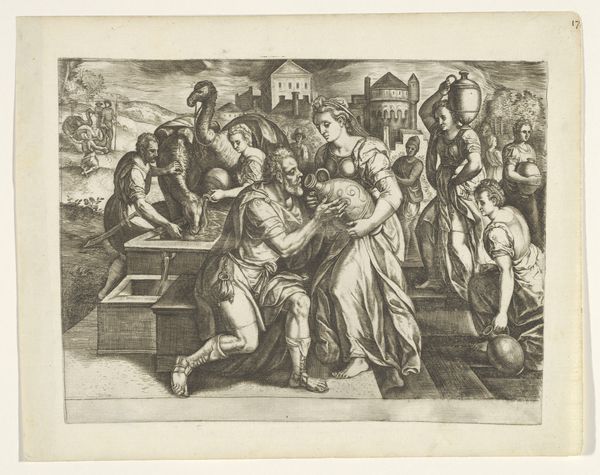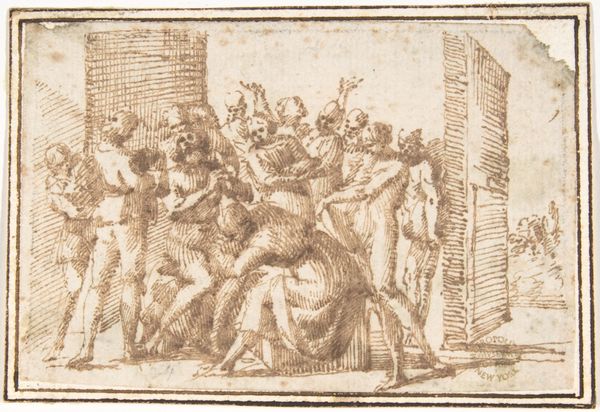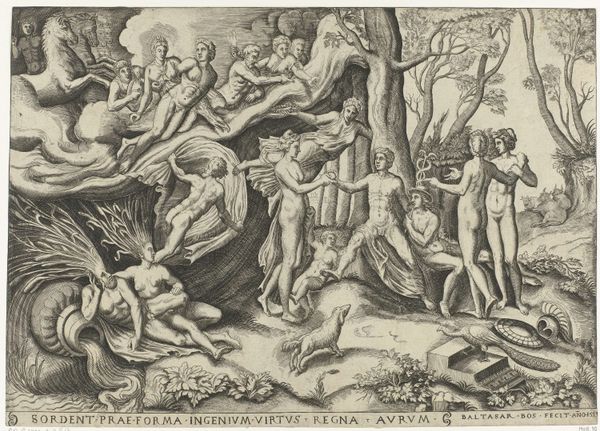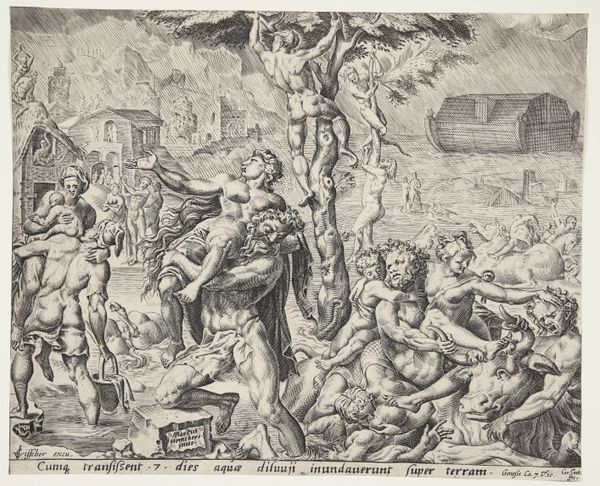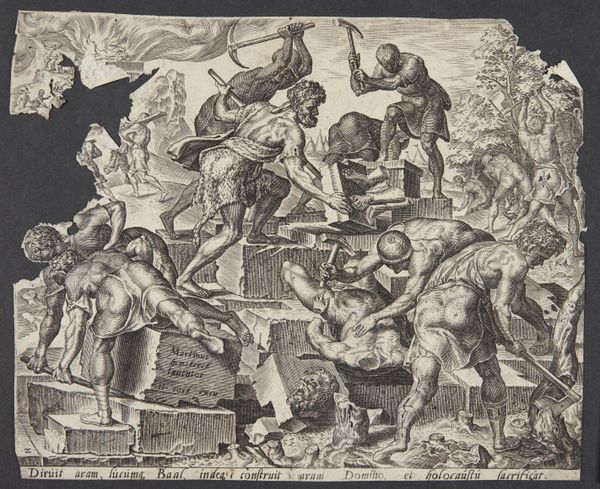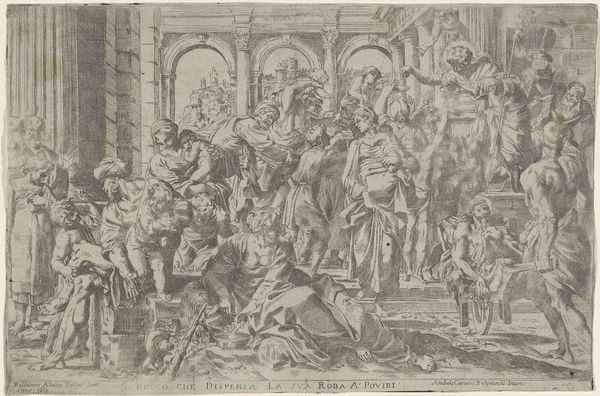
drawing, print, relief, engraving
#
drawing
# print
#
relief
#
figuration
#
child
#
men
#
history-painting
#
italian-renaissance
#
nude
#
engraving
#
male-nude
Dimensions: 11 1/16 x 16 15/16 in. (28.1 x 43.0 cm)
Copyright: Public Domain
Curator: A truly striking image. "The Massacre of the Innocents," conceived around 1507 to 1517, demonstrates the engraver's skill with the burin in translating designs to a print medium. The artist behind it is Marcantonio Raimondi, a prominent figure of the Italian Renaissance. Editor: What a disturbing image! The dynamism is remarkable, an almost unbearable visual tension conveyed solely through line and form. Curator: Precisely. Consider the formal arrangement: a frieze-like composition set against a backdrop of classical architecture. Raimondi organizes the chaotic scene into clear, almost geometric segments, creating a balanced horror. Editor: The symbolism is dense. One can feel echoes of the biblical narrative. This work pulls you in with its violence. It makes visible cultural anxieties regarding sacrifice. The sacrifice of the innocents. The horror and helplessness... it is all there. Curator: The echoes are no coincidence; these allusions deepen the composition. Consider the figures' positioning. Are those echoes of Roman sculpture, perhaps drawing on classical archetypes? Look at their exaggerated muscularity, almost heroic even in the act of infanticide. Editor: Absolutely, I can sense this almost masculine cult of violence and power and these fragile children under the threat of the blades. Notice that the visual impact remains incredibly powerful, almost propagandistic, which shows its ability to speak to something deep in our psyches. Curator: Indeed. The lines are so definite and they highlight and shadow the tension across each plane, thus heightening that visual impact you describe. One truly begins to recognize that an artist needs material constraint to deliver the greatest and most evocative potential from that art. Editor: After our conversation, it now seems there is a reason behind everything that you noticed with your fine, refined sensibility. Curator: Well, now your astute symbolism enhances and complements that understanding. I thank you for adding that other dimension to it.
Comments
No comments
Be the first to comment and join the conversation on the ultimate creative platform.
